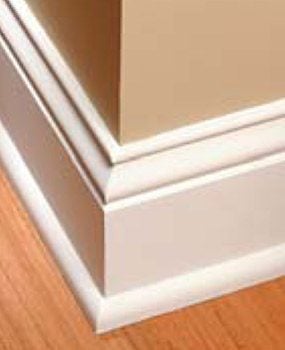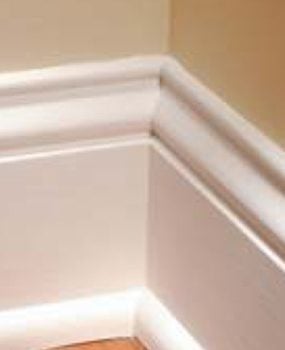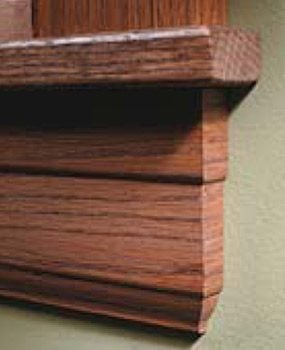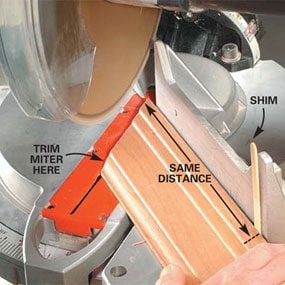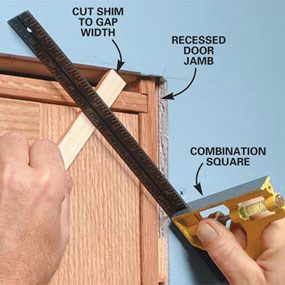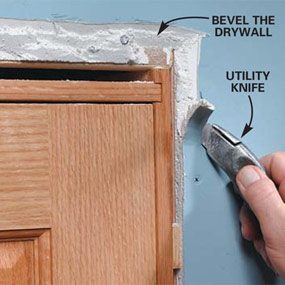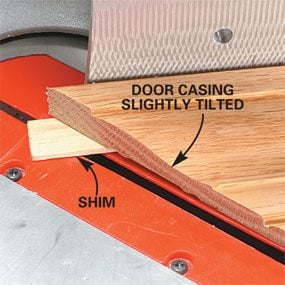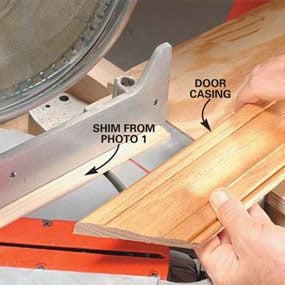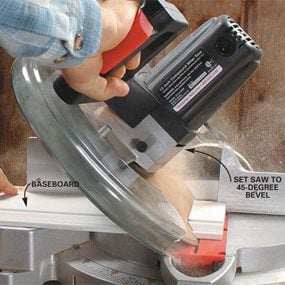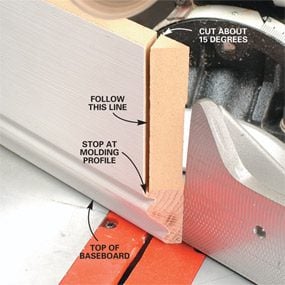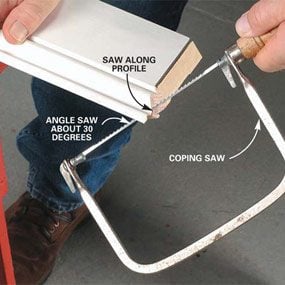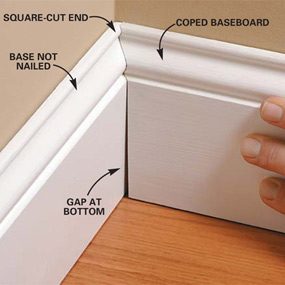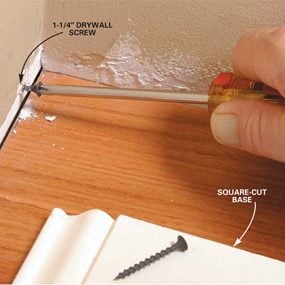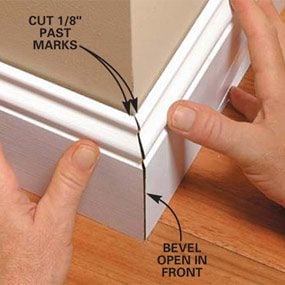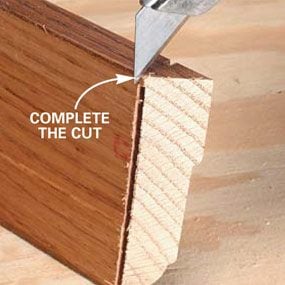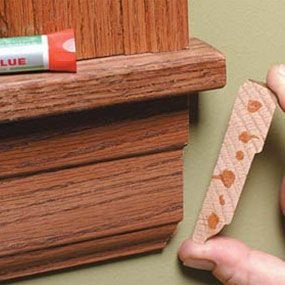Perfect Trim on Doors, Windows and Base Moldings
Updated: Jul. 14, 2023Tricks for getting tight-fitting joints on door and window casings and on base moldings.
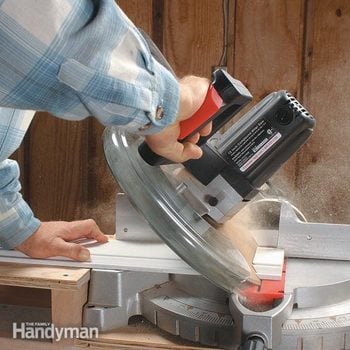
- Time
- Complexity
- Cost
- A full day
- Intermediate
- $51–100
Tricks for tight-fitting joints
Miters rarely fit on the first try and for good reason. Corners are out of square, walls aren’t plumb and drywall has bumps.
The secret to tight-fitting joints is knowing how to adjust the cuts to make them conform to all these wacky conditions. In this article, we’ll show you a bunch of tricks you can use to cut wood door trim molding and window casing and baseboard joints to fit perfectly, even when you have less than perfect walls and jambs.
Shaving technique for tough corners
How many times have you set your miter box exactly on 45 degrees and cut miters on a pair of moldings only to discover they don’t fit? Well, don’t worry. There’s nothing wrong with your miter box or your technique. Miters almost always have to be shaved to fit perfectly.
One method is to simply adjust the angle slightly on your miter box and recut both moldings. The trouble is that making tiny adjustments to the cutting angle is difficult on many power miter boxes. A quicker and easier method is to place a shim against the miter saw fence to slightly change the angle. Move the shim away from the blade for smaller adjustments and closer for larger ones, or vary the thickness of the shim. Remember, both pieces need the exact same cut to fit precisely.
Tools for Perfect Trim
Even the best carpenter can’t cut a tight-fitting joint with a dull saw blade. Invest in a good carbide trim blade for your power miter box. Read the labeling on the package and choose a blade designed for cross-cutting trim molding on a power miter box. A thin-kerf 60-tooth blade will make even the least expensive miter box perform like a champ.
Also rent or buy a power trim nailer and compressor. It’s much easier to get great results when you can hold the molding in place with one hand and drive the nails with the other.
Tight miters on recessed jambs
Occasionally you’ll run into a door or window frame that for whatever reason isn’t quite flush with the wall. The best solution is to fix the jamb by planing it off if it protrudes or, if it’s recessed, adding thin strips, called jamb extensions. But this isn’t always possible.
If the jamb is only slightly recessed and adding jamb extensions would be unsightly, there’s another solution. First remove enough drywall so the trim can span the jamb and wall without rocking (Photo 2). This solves half the problem. But even now a regular 45-degree miter won’t fit because the molding has to tilt down to meet the jamb. Correct this problem by tilting the trim on the bed of the miter box to match the angle at which it rests against the wall.
Then make standard 45-degree miter cuts. Photo 1 shows how to determine the correct thickness for the shim used in Photo 3 to tilt the trim molding.
Coping tall base
Coping rather than mitering inside corners is the best method to fit baseboards. But on tall baseboards, cutting the long straight section of the cope with a coping saw is difficult, and the cut is usually wavy. Instead, start the cope as usual (Photo 1). Then tip the molding upside down in the miter box and saw straight down to the profiled section. Finally, complete the cope by sawing out the profile (Photo 3).
Easier adjustments for inside corners
Floors that are out of level can cause even perfectly coped inside corners to look lousy. Check the fit of your cope before you nail in either base molding. That way you’ll still have the option to shim out the bottom of the square-cut (uncoped) piece to close a gap at the bottom of the cope (Photo 2). Photo 3 shows marking a cope that’s open at the top. You then file or plane to the line.
Overcut outside corners
Getting outside corners to fit tight is trickier than it looks. The key is to make accurate marks with the baseboard in place rather than relying on measurements. And then cut the piece a little long so you still have the option to shave a little from the angle if it doesn’t fit. Since gaps on the back side of the corner are barely noticeable, while gaps on the front are glaring, it’s a good idea to start by cutting slightly steeper 45-1/2 degree angles first. Then if there’s still a gap in the front, cut a slightly steeper angle on both pieces.
You’ll need a compound miter saw or sliding compound miter saw to easily cut tight-fitting miters on a wide baseboard.
Mitered returns
Return miters are an elegant way to finish the end of moldings. But cutting the small return can be tricky. The tiny mitered pieces of molding tend to catch on the spinning blade and launch into space. Photos 1 and 2 below show one solution.
Required Tools for this Project
Have the necessary tools for this DIY door molding project lined up before you start—you’ll save time and frustration.
- Air compressor
- Air hose
- Brad nail gun
- Combination square
- Coping saw
- Dust mask
- Hearing protection
- Miter saw
- Safety glasses
- Utility knife
Required Materials for this door molding Project
Avoid last-minute shopping trips by having all your materials ready ahead of time. Here’s a list.
- Glue
- Molding
- Shims
- Trim
